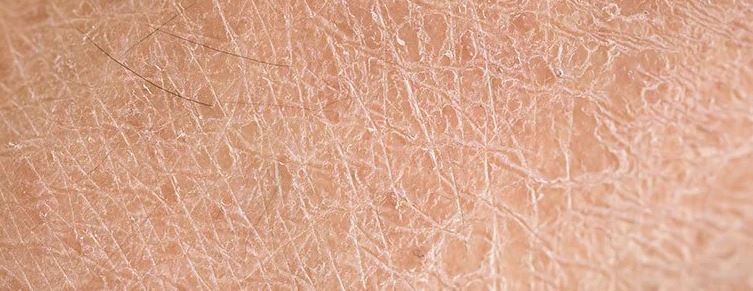Dry skin (xerosis)
Moisturization will restore lost hydration to the skin
Xerosis (not to be confused with Cirrhosis)
Xerosis is the condition of dry skin and can be a result of multiple medical conditions. However, it often can occur on its own without an obvious cause. Different factors can influence severity including genetics and environment.
In fact, there are some genetic conditions called icthyosis which are marked with extreme dry skin as a result of a defect in a skin protein. As a result the skin constantly loses moisture. Icthyosis vulgaris is an example of such a condition which is actually not uncommon. Environmental factors such as dry cold climates can also contribute to dry skin. Overtime, and with sun damage the skin also normally becomes drier than in our youth.
Moisturization is critical to restoring the water that is lost through the skin throughout the day. The best time to use the moisturizer is usually immediately after the shower at night. There are a large number of products effective for this purpose. Generally the ointments and creams will be more effective than the lotions.
Try select a product that does not contain fragrance or a multitude of plant based ingredients if you have a history of eczema or allergies.
Treating dry skin should help to reduce episodes of itching in addition to improving the appearance of the skin. However, treating dry skin may be about more than just symptoms. Some patients with certain medical conditions such as diabetes may be more susceptible to infection. By maintaining a good skin barrier you may offer some protection against this particularly on the feet.
There was also a recent study that suggested the possibility that treating dry skin could lower your risks of certain other health conditions like dimentia.( https://www.medicalnewstoday.com/articles/324717.php )
Dry Feet? Cracked heels?
Dry cracked heels are a common problem and a huge frustration for many patients. Fortunately, there are solutions.
The most important first step in evaluation is to exclude a secondary cause for the dryness and cracking such as an underlying skin disorder like psoriasis, eczema, or a contact dermatitis all of which can cause redness and peeling on the feet. We may also check for a fungal infection (tinea pedis).
Once an underlying cause has been excluded, we are left with dry skin as the diagnosis also known as xerosis. We often attempt to screen for exacerbating factors such as walking barefoot or improper skin care.
There are many products that are helpful for this condition. My favorite treatment are the urea containing products. Urea is a keratolytic meaning it dissolves the keratin (makes up top layer skin cells) removing the flaking skin and allowing better moisturization.
There are many different brands containing this product which are helpful. My personal favorite is the ISDN Ureadin Podos Gel Oil, which we carry in our office.


